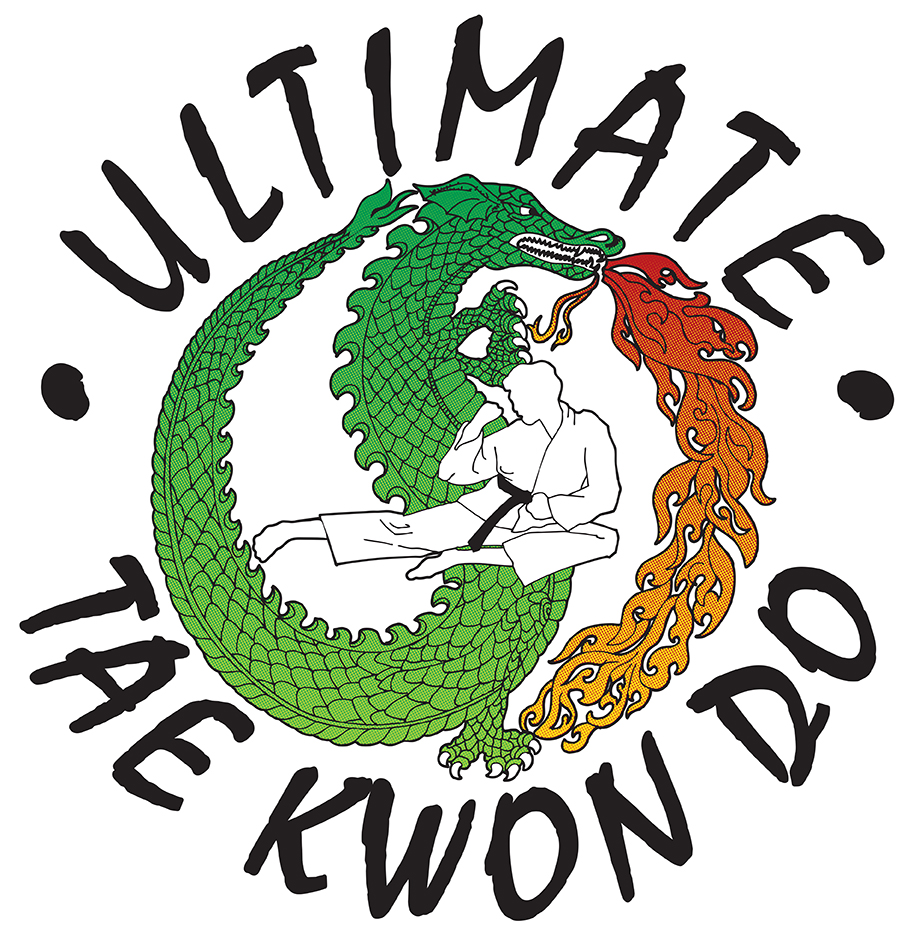Meaning of Tae Kwon Do
Tae Kwon Do means the “art of hand and foot fighting”. It is the scientific use of the body and the methods of self-defense.
Tae Kwon Do stresses the importance of harmony and balance between the mental and physical.
By doing this, one can have a stable and balanced system. Then one can learn how the mind and body can become the weapons of Tae Kwon Do.
Student Oath
- I shall observe the Tenets of Tae Kwon Do: Courtesy, Integrity, Perseverance, Self-control and Indomitable Spirit.
- I shall respect my instructors, seniors and parents.
- I shall never misuse Tae Kwon Do.
- I shall be a champion of freedom and justice.
- I shall help build a more peaceful world.
Benefits of Tae Kwon Do Training
- Self-confidence
- Self-discipline
- Coordination
- Mental and physical conditioning
- Muscle toning
- Posture improvement
- An opportunity to meet new friends
Techniques and Terminology
Instructor (4th dan and above) – Sa Bum Nim
Instructor (1st dan to 3rd dan) – Chu Gyo Nim
Practice Uniform – Dobok
Training Hall – Dojang
Thank You – Kam Sam Ne Da
Free Sparring – Ja Yu Dae Ryun
One-Step Sparring – Il Bo Dae Ryun
Three-Step Sparring – Sam Bo Dae Ryun
Front Stance – Chongul Jae Sae
Back Stance – Hugul Jae Sae
Riding Horse Stance – Kim Jae Sae
Ready Stance – Chunbee
Low – Ha Dan
Middle – Jung Dan
High – Sang Dan
Side Kick – Yup Chaki
Front Kick – Ap Chaki
Roundhouse Kick – Doll Rye Chaki
Front Crescent Kick (inside-outside) -Ap Hurya Chaki
Front Crescent Kick (outside-inside) – Chiki Chaki
Front Hooking Kick – Ap Hu
Reverse Hooking Kick – Dwe Doll
Jumping Kick – Ei Dan Chaki
Spear Fingers – Kwansu
Punch – Konk Keok
Knife Hand – Sudo
Ridge Hand – Yeop Sudo
Block – Maki
Commands
Attention – Charyot
Bow – Kyung Yeh
Finish, return to beginning position – Goman or Baro
Turn around – De Dohrahs or Dohrahs
Ready – Go – Si Jak
Korean Counting
1. hana
2. duel
3. set
4. net
5. dase
6. yuhset
7. ilgop
8. yeoldeol
9. ahop
10. yeol
11. yeolhana
12. yeoldeul
13. yeolset
14. yeolnet
15. yeoldaset
16. yeolyuhset
17. yeolilgop
18. yeolyeoldeol
19. yeolahop
20. soomul
21. soomulhana
22. soomuldeul
23. etc…
30. serun
40. mahron
50. osip
100. bek
1st – il
2nd – ei
3rd – sam
4th – sia
5th – oh
6th – yuk
7th – chel
8th – pal
9th – ku
10th – shp
Meaning of the Belts
White – Signifies innocence as that of a beginning student who has no previous knowledge of the art of Tae Kwon Do.
Yellow/Orange – Signifies earth, a plant sprouts and takes root as the Tae Kwon Do foundation is being laid.
Green – Signifies the plant’s growth as Tae Kwon Do skills begin to develop.
Blue – Signifies the heaven towards which the plant matures into a towering tree as the training in Tae Kwon Do progresses.
Brown – Signifies danger, cautioning the student to exercise control and warning the opponent to stay away.
Black – Opposite of white, therefore, signifying the maturity of proficiency in Tae Kwon Do. Also indicates the wearer’s imperviousness to darkness and fear.
Meaning of Korean Flag
The Korean National Flag, the symbol of the Republic of Korea South Korea, is named “T’aegukki.” The name was derived from the taeguk circle in the center.
The circle is divided into two equal parts in perfect balance, representing the yin and yang. The red upper part is the yang and the blue lower part is the yin. In the Orient, the two parts represent the great cosmic forces which collide and depart in perfect balance and harmony.
The taeguk circle stands for the eternal principle that everything in the universe is created and develops through the interaction between yin and yang, thus symbolizing creation and development.
The four trigrams surrounding the circle denote the process of yin and yang going through a spiral of change and growth. That means heaven (ko’n) at the upper left, earth (kon) at the lower right, water (kam) at the upper right, and fire (I) at the lower left.
The white background of the flag represents purity of the Korean people and their peace-loving spirit. The flag as a whole is symbolic of the ideal of the Korean people to develop forever together with the universe.
School Rules
- Bow to the flags before entering or leaving the locker rooms and training hall.
- Upon entering the Dojang, bow to your instructor and all seniors.
- If belt or dobok needs adjusting, always turn away from all seniors and the flags.
- Bow before addressing a senior.
- Do not bow to a senior if he/she is practicing or instructing others unless you have established definite eye contact.

